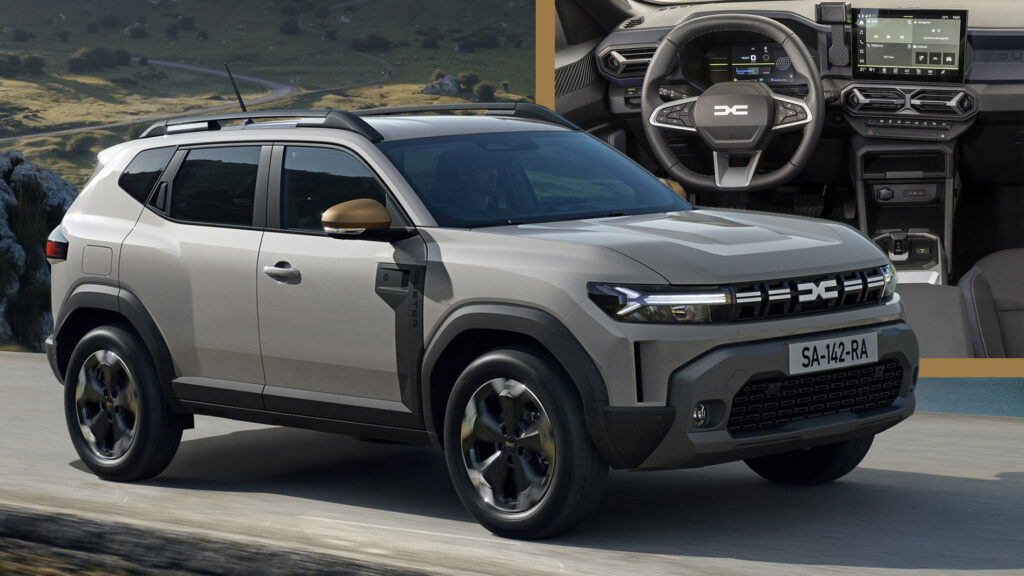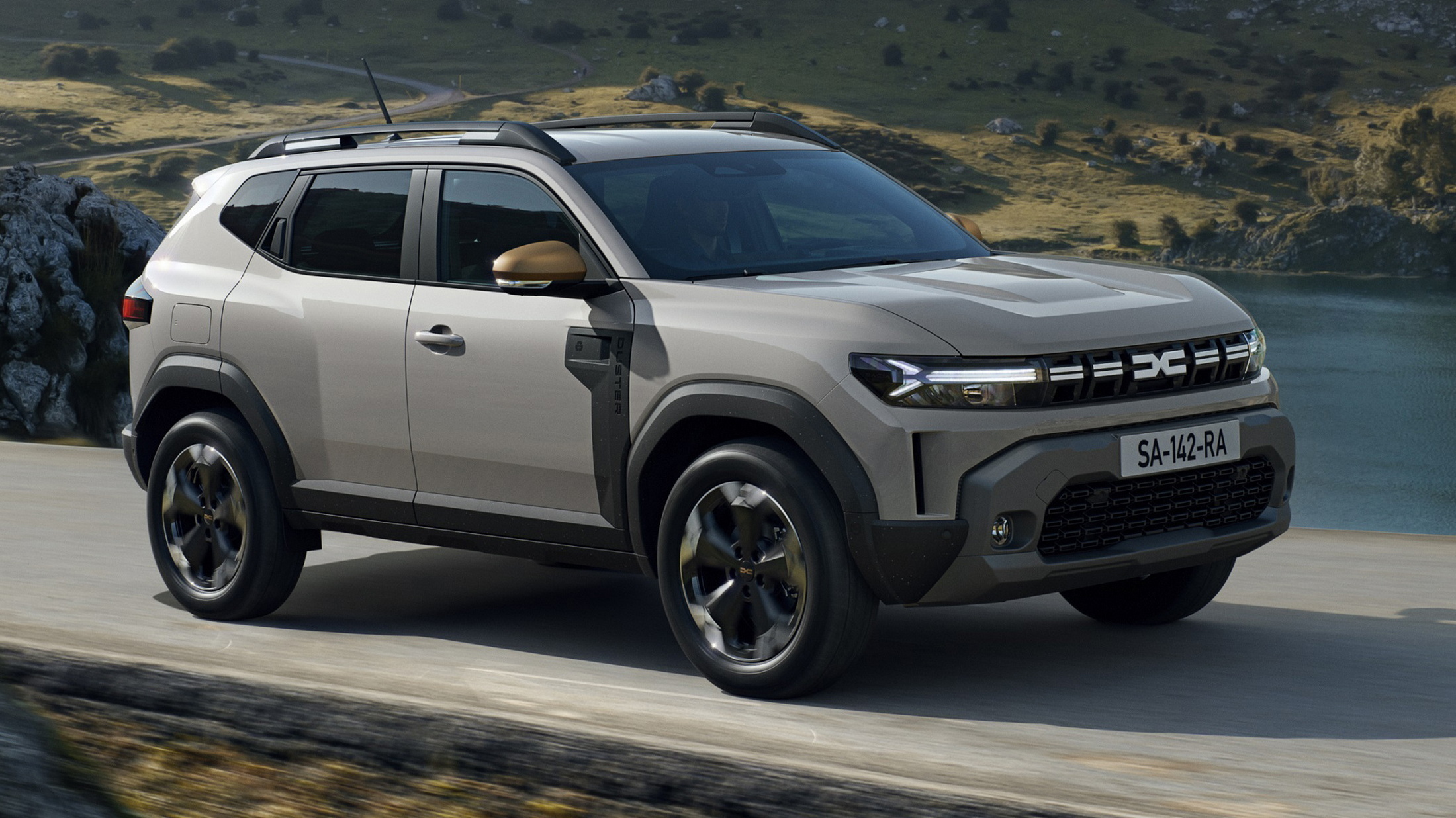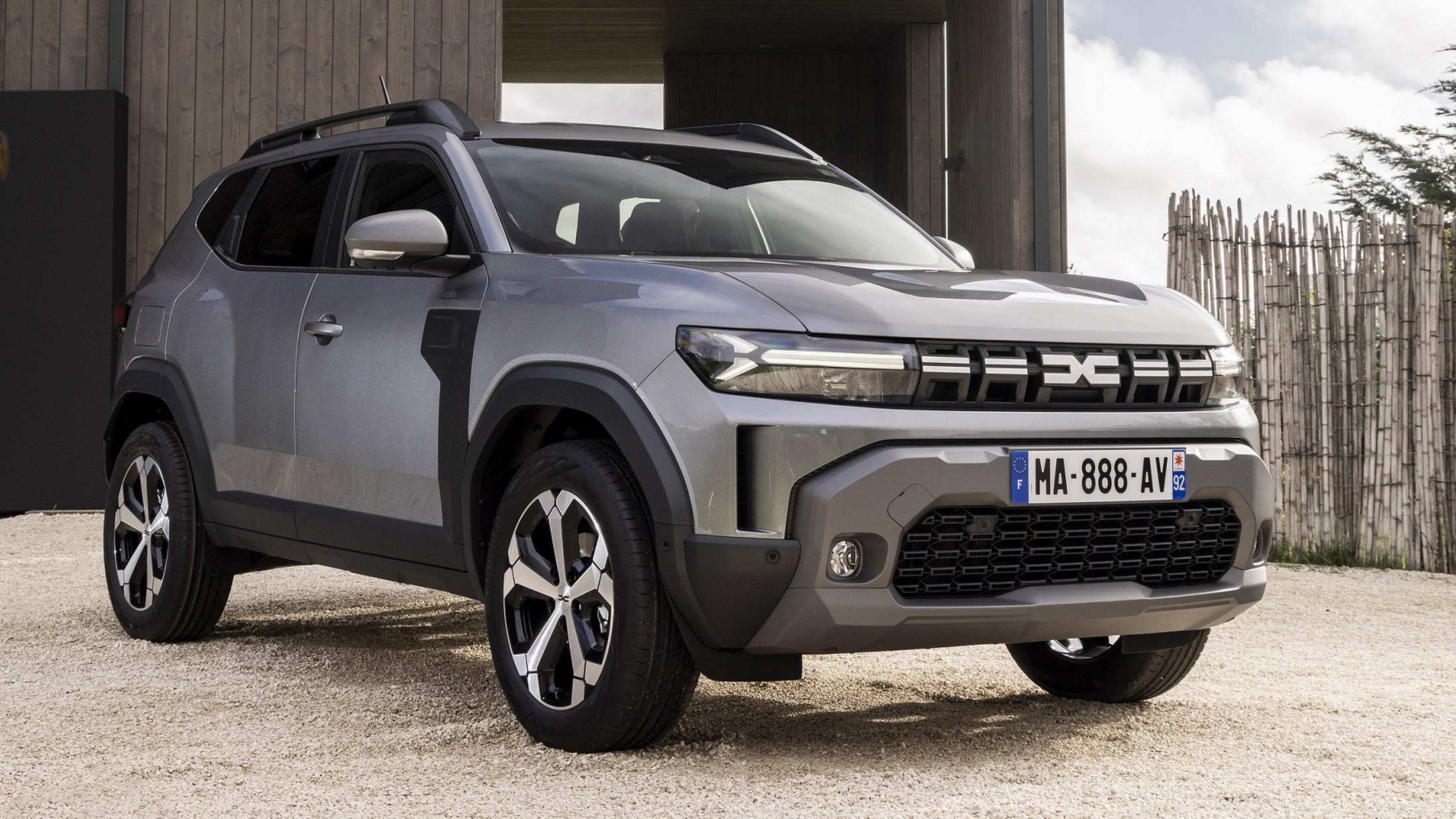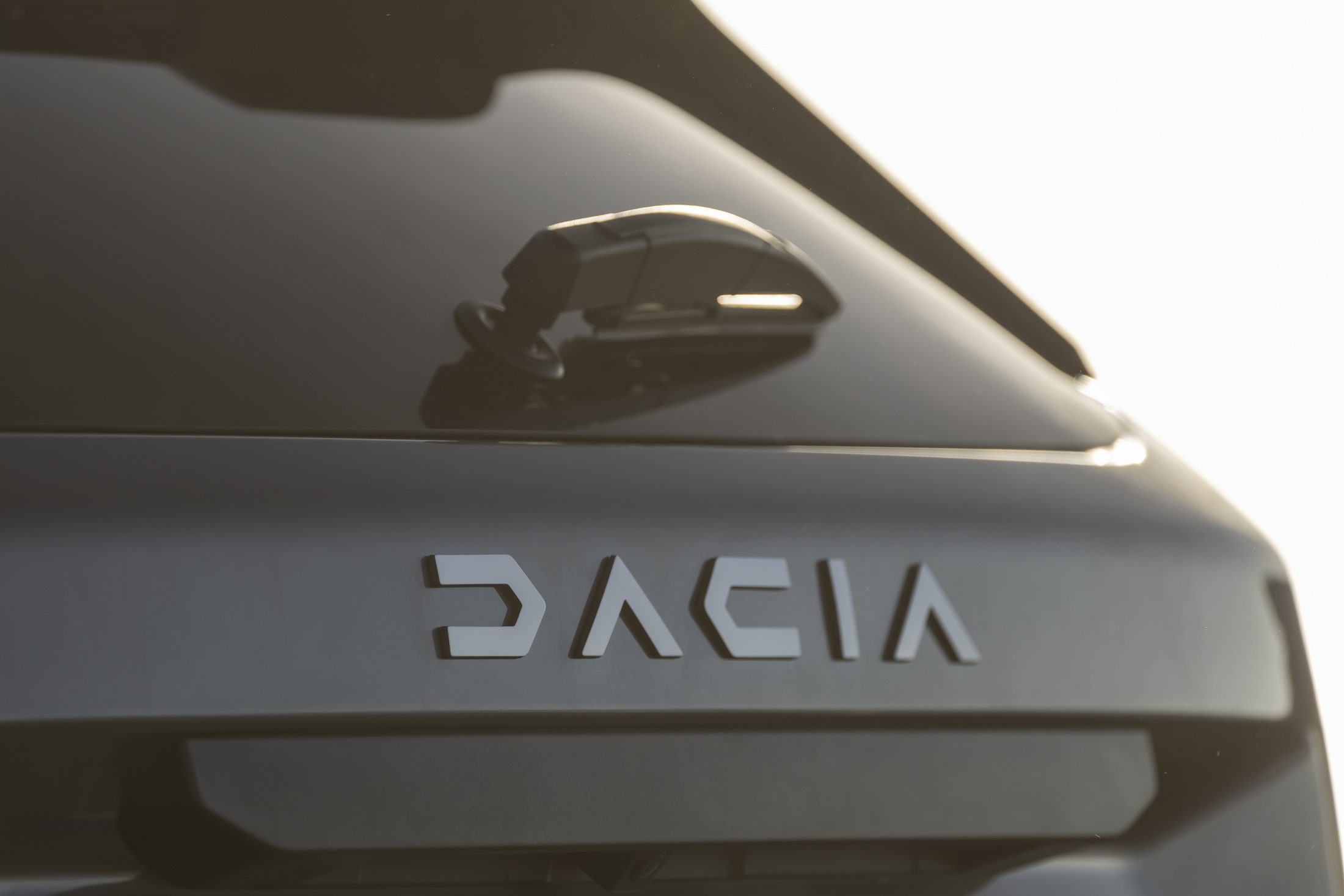The Dacia Duster, the most important model of the Romanian automaker, has entered its third generation, aiming to enhance the qualities that initially made it popular in the first place. The sub-compact SUV now boasts more rugged looks than its predecessor, uses tougher and more sustainable materials, features a more spacious cabin, and is now offered with electrified powertrains making up for the demise of the diesel. Despite these significant upgrades, Dacia promises to offer the Duster at the most affordable prices in its segment, calling it a “bargain”.
The 2024 Dacia Duster adopts the automaker’s latest styling language, looking like a smaller version of the Bigster concept. The sculpted bodywork features a generous amount of plastic cladding made of a new material called Starkle (20% reused polypropylene), while the pronounced fenders, boxy wheel arches, and oversized skid plates complete the off-roader stance. Furthermore, the slimmer and modernized lighting units incorporate Y-shaped LEDs which is one of Dacia’s (and Lamborghini’s) signature traits.
The B-segment SUV measures 4.34 m (171 inches) long, 1.81 m (71.3 inches) wide, and 1.66 m (65.4 inches) tall, being 23 mm (0.9 inches) longer than the previous generation.
More: 2025 Dacia Bigster Coming As A Flagship SUV On A Budget
2024 Dacia Duster Extreme
Inside, the new Duster features a digital cockpit that includes a 7-inch digital instrument cluster and a 10.1-inch infotainment display. These features come standard in all trims except for the entry-level ‘Essential.’ Another noteworthy addition is the Dacia YouClip accessory system, which includes up to five grips located throughout the car. These grips can hold smartphones, tablets, storage pouches, cupholders, and more.
Adding up to the improved practicality, Dacia claims that the new generation offers 30 mm (1.2 inches) of extra rear legroom, and increased front interior width. The boot has a wider opening and a lower floor, with its 472 lt (16.7 cubic feet) capacity representing a 6% increase compared to the previous Duster.
The adventurous character of the Duster is accentuated by the wide range of accessories as part of Dacia’s InNature collection. The highlight is the camping-friendly Sleep Pack, originally introduced on the Jogger crossover estate, which adds a fold-out double bed, tray table, and storage space inside a removable 3-1 box.
Electrified And Bi-Fuel Powertrains Plus A 4×4 Option
The all-new Duster rides on CMF-B architecture, which now underpins Dacia’s entire model range alongside numerous models from other Renault Group brands. The new platform is said to bring improvements in ride quality and comfort while being compatible with mild-hybrid and hybrid powertrains, next to the bi-fuel (gas/LPG) option (the diesel has been discontinued).
The most powerful version of the Duster is the Hybrid 140, with a self-charging hybrid system producing a combined 138 hp (103 kW / 140 PS). The electrified powertrain that is shared with the Jogger comprises a naturally aspirated 1.6-liter four-cylinder engine, dual electric motors, a multi-mode gearbox, and a 1.2 kWh battery.
As a simpler alternative, Dacia offers the Duster TCe 130 with a turbocharged 1.2-liter three-cylinder gasoline engine featuring a 48 V mild-hybrid motor and a smaller 0.9 kWh battery. The mild-hybrid Duster makes 128 hp (96 kW / 130 PS) and is said to offer 10% lower emissions and fuel consumption compared to a non-electrified engine of the same output. The Renault-sourced engine is exclusively mated to a six-speed manual gearbox sending power to either the front or to all four wheels.
The optional 4×4 version has five selectable driving modes (Auto, Snow, Mud / Sand, Off-Road, and Eco) and a class-leading ground clearance of 217 mm (8.5 inches) placing the Duster among the most off-road capable models in the sub-compact SUV (B-SUV) segment.
Last but not least, the entry-level Duster is offered with the turbocharged 1.0-liter TCe 100 Bi-Fuel motor that can run on both gasoline and LPG. This setup allows the SUV to travel up to 1,300 km (808 miles) between refueling stops, given that the 50 lt (13.2 gallons) gasoline and LPG tanks are full. The LPG tank is located under the boot floor so it doesn’t compromise the cargo capacity (although we suspect it takes up the space of the spare tire).
Simplified Range, Affordable Pricing
Despite being a budget-friendly automaker, Dacia observes that approximately 70% of its customers opt for the higher-end trims. The new Duster aims to cater to both ends of the spectrum by offering a simplified lineup consisting of four trims. The entry-level ‘Essential’ sets the starting price for the lineup, featuring fixed roof bars, six airbags, and rear parking sensors as standard. Moving up, the ‘Expression’ trim includes the digital cockpit, 17-inch alloy wheels, a reversing camera, and more.
2024 Dacia Duster Journey
The better-equipped Journey rides on 18-inch wheels, and comes with fog lights, auto A/C, wireless smartphone charger, Media Nav Line infotainment, and a 6-speaker Arkamys 3D Sound System. Finally, the flagship Extreme features modular roof bars, washable TEP MicroCloud upholstery, rubber mats, the YouClip 3-in-1 system, electric mirrors, and Copper Brown accents.
While Dacia has historically prioritized cost-saving over advanced driver assistance systems (ADAS), the new Duster must now meet regulatory requirements. As a result, it offers a range of safety features including auto emergency braking, traffic sign recognition, speeding alert, rear parking assist, emergency stop signal, lane departure warning, lane keep assist, driver attention alert, automatic headlights, and emergency calling.
Pricing has yet to be disclosed but Dacia promised that the Duster will have “the most affordable prices in its segment” with the company’s CEO Denis Le Vot, stating that the new generation will start below the €20,000 ($22,000) mark in Europe.
Similar to its predecessor, the SUV will be manufactured at the Pitesti plant in Romania. According to the company, approximately 1,000 Dusters roll off the factory floor each day, resulting in a cumulative production of 2.2 million units since the debut of the first generation in 2010.























































































































































